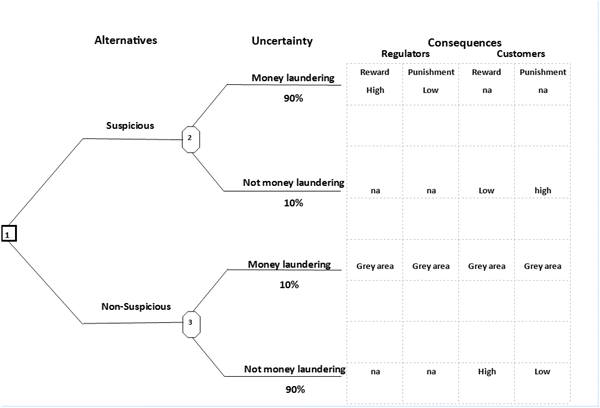#QuickBiteCompliance Day 78
🚨 How to Spot the Bad Guys: A Simple Guide to Financial Crime Detection 💡
Imagine you’re a superhero trying to stop the bad guys from stealing money. You need a special tool to figure out who’s innocent and who might be up to no good. That’s where the Decision Tree and the Five-Question Process come in! 🌳🔍
What is a Decision Tree?
A decision tree is like a “choose your own adventure” story. Each question you ask helps you decide whether someone’s behavior is okay or suspicious. It’s a super simple way to solve a tricky problem!
The Five-Question Process:
These questions help us figure out if we need to investigate or if it’s safe to move on:
1️⃣ Does the transaction make sense?
Example: A florist sending $1,000,000 overseas? That doesn’t add up!
2️⃣ Does this person or company match any “bad guy” lists?
Example: Checking if they’re linked to known criminals or banned organizations.
3️⃣ Are there unusual patterns?
Example: Someone deposits small amounts every hour for days—this might be “structuring” to avoid being noticed.
4️⃣ Where is the money coming from or going to?
Example: A luxury car dealer receiving funds from a country known for money laundering? That’s fishy.
5️⃣ What’s the bigger picture?
Example: Is this one alert part of a larger, suspicious web of activity?
How Bad Guys Try to Trick the System:
💸 Layering: Sending money through lots of small transfers to hide its origin.
🛑 Fake Businesses: Setting up fake companies to make dirty money look clean.
🌍 Offshore Accounts: Moving money to countries with fewer rules to avoid being caught.
With the decision tree and these questions, we can stop the bad guys in their tracks! Every alert is like a clue—it’s up to us to connect the dots. 🕵️♂️✨
💬 Let’s Talk: What other tools or questions do you use to catch financial crime? Share below!
#FinancialCrime #AML #FraudDetection #RiskManagement #Compliance #InclusiveRegtech #OpenSourceAML
Source: https://www.acams.org/en/resources/aml-glossary-of-terms


